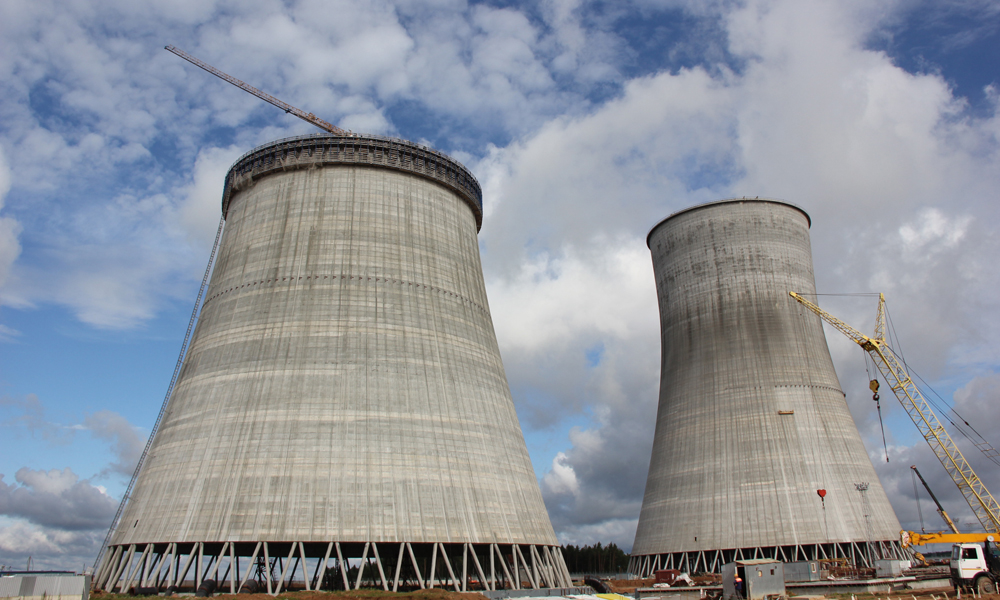
Belarus NPP Meets Highest Standards
back to contentsIt was Belarus’ voluntary move to perform a comprehensive nuclear safety assessment based on the EU criteria after the country decided to adopt the Joint Statement on Comprehensive Risk and Safety Assessments of Nuclear Plants (‘stress tests’) in 2011. The stress tests were carried out in 2016 in accordance with the guidelines of the European Nuclear Safety Regulators Group (ENSREG). The national report on stress tests was finalized in October 2017 and submitted to the European Commission and ENSREG to be reviewed by international experts.
Safety is an absolute priority for every country involved in nuclear construction and operation, Atom.Belta news agency quoted Olga Lugovskaya, Head of the Nuclear and Radiation Safety Department of the Belarusian Ministry of Emergency Situations, as saying. Belarus also shares this view and realizes the importance of safety for its nuclear plant under construction. “I would like to note that safety levels reported by us are sufficient based on the stress tests we performed. We are at the initial stage of our nuclear power program, and stress tests are seen as a reliable tool to analyze and confirm safety of the plant we are building. Stress tests are also a driver of competence improvement for both the regulator and tech companies that took part in preparing the national report,” Lugovskaya added.
Vasily Aksyonov, Director of WANO Moscow, said that the World Association of Nuclear Operators welcomed every event that was aimed at improving nuclear plant safety. Conclusions of the stress test report will be taken into account during the peer review that will take place before the commissioning of the Belarus nuclear power plant. “Relying on expert assessments is a strength of the nuclear industry. Any peer review is an important step towards nuclear safety as it helps sharing experiences between countries and nuclear operator companies,” Vasily Aksyonov said.
In 2018, the nuclear power plant will be visited by experts of the World Association of Nuclear Operators (WANO). A number of IAEA missions and training seminars are also on the plan before the plant is started.
Earthquake is no threat
Earthquake is a potential stress factor assessed by the Belarusian regulator. Following a probability analysis, the maximum seismic intensity of an earthquake around the nuclear plant site was estimated to be 6 on the MSK-64/EMS-98 scale (not to be confused with the Richter scale measuring magnitude). Intensity 6 is taken as a ‘design basis’ earthquake for the plant. That said, reactors are designed to safely withstand even a highly unlikely intensity 8 earthquake (intensity 7 on the MSK-64/EMS-98 scale was identified as the ‘strongest potential earthquake’ for the plant’s site). The plant will also withstand a flood although floods in the area are totally unlikely (otherwise the water level should rise 51.5 meters above historical highs). The analysis and subsequent simulations have shown that there is no threat to the reactor even if underground rooms of the plant are flooded in a hypothetical scenario.
There will be no emergency even in the most extreme weather conditions, which occur once in 10,000 years (such as a temperature increase to 50°C or a 62 m/s wind storm or their combinations), because measures against floods, earthquakes and other natural disasters are sufficient for the plant to withstand the harshest impacts of the environment.
Wide public support
Around 60% of Belarusians support the nuclear construction project delivered with Russia’s input. Earlier Mikhail Mikhadyuk, Belarusian Deputy Minister of Energy said that in areas adjacent to the construction site the popular support of the nuclear plant reaches 83%. He stressed that a 50% support for the nuclear construction project was seen as high across the globe.
FOR REFERENCE
VVER-1200 is the only Generation 3+ reactor with a demonstrated history of successful commercial operation. The first VVER-1200 was brought online at Novovoronezh in 2016, with the second to be commissioned by the end of 2017. Its design is the most advanced for now and combines the latest active and passive safety solutions compliant with the post-Fukushima standards as set out in the European Utility Requirements (EUR) and other regulations adopted by the EC, ESREG and IAEA.




